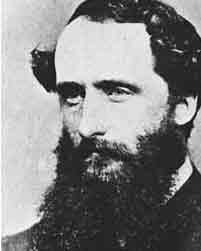Sarsfield Australia
Sarsfield is a tiny hamlet and surrounding semi-rural community on the Nicholson River in the South-Eastern corner of Australia. It boasts a bridge, a dozen or so houses and a single street light in the middle. There are no shops, no pub and the school has been closed a few years ago.
But of course there is always hope that Sarsfield too, will eventually graduate to a traffic light and perhaps a supermarket!
The Gippsland area has been inhabited for at least 18 000 years by people of the Gunai or Kurnai tribe, living as hunters and gatherers in the hills and along the rivers and the coast. (learn more: Bataluk Cultural Trail).
The first European to cross the area was explorer-pasturalist Angus MacMillan, searching for pasture for the drought-stricken livestock of the Monaro high plains in 1840. Two years later, largely ignoring the occupancy right of indigenous people, several cattle stations were established in the region.
Within 40 years only 140 of the 1500 or so original inhabitants were still alive.
The area was named by Charles Marshall after the famous Irish General Patrick Sarsfield, a distant relative.
 Charles Marshall was born in Sydney, Australia, in 1817, to convict parents George Marshall and Mary McCarroll. He first came to the area with a friend who pioneered a local cattle station.
Charles Marshall was born in Sydney, Australia, in 1817, to convict parents George Marshall and Mary McCarroll. He first came to the area with a friend who pioneered a local cattle station.
With his whaleboat "Sarsfield" he found the old entrance from the ocean into the Gippsland lakes in 1854, and traveling the Nicholson River he discovered gold.
 In 1856 Marshall built a store and hotel , the Captain Cook Hotel, to supply travellers to the goldfields of Nicholson and Omeo. His boat “Sarsfield” carried stores and passengers weekly from Port Albert to Sarsfield.
In 1856 Marshall built a store and hotel , the Captain Cook Hotel, to supply travellers to the goldfields of Nicholson and Omeo. His boat “Sarsfield” carried stores and passengers weekly from Port Albert to Sarsfield.
Extract from the Gippsland Guardian 24.10.1856
" Notice to Diggers and Travelers to the Omeo and Nicholson Diggings:
Parties arriving at Port Albert for either of the above diggings, are hereby informed that they may avail themselves of a cheap and expedious mode of travelling by the lakes from Seacomb township, as a 4 ton whale-boat leaves the above township every Monday morning after the arrival of the Melbourne steamer at Port Albert, and leaves passengers and their swags within 16 miles of the Nicholson Diggings, at the Captain Cook Hotel." Prott Brors, Seacomb, Oct 2nd 1856
In 1859 a bridge was built across the Nicholson and a town planned.
Alfred Howitt, the famous explorer and anthropologist, stayed at the Captain Cook Hotel.
He wrote:
“We have enlisted the service of that prince of hosts, Charley Marshall, the worthy proprietor of the hotel, to pioneer us over the newly marked township, a few lots of which are to be disposed of at the Government land sale on 23rd instant…”
But when only a few lots were sold he remarked: ”I expect Sarsfield will remain another monument of red tape, ignorance and folly.”
With the discovery of other, richer goldfields, however, prospectors and miners moved on.
The Captain Cook Hotel was burnt down in the 1860s by Aborigines in retaliation for the shooting of two of their men who were caught shoplifting. A few years later another hotel was built in its place, which was first called Nicholson Hotel, and later Sarsfield Hotel.

Sarsfield never grew as a township. Mixed farming, hops, vegetables and dairying eventually became unsustainable and gave way to cattle and sheep grazing. Today the community is growing again, but few people make their income from farming alone.
